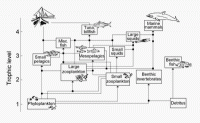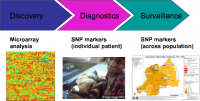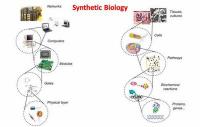-
Web sites offer incomplete information on safely storing firearms in the home
The are four safety measures which should be followed to keep children safe around guns: The guns should be kept locked and unloaded, and ammunition should be stored in a locked and separate location. The vast majority of Internet pages visited by people searching for firearms storage guidance, however, prove to be duds when it comes to giving accurate and complete information on how to keep children safe around guns. Only 2 percent of Web pages with information on firearm storage correctly identified all four practices shown to protect children and adolescents living in homes with guns.
-
-
Pediatricians: Food insecurity ongoing health risk to U.S. children
The latest data show that more than fifteen million U.S. children live in households still struggling with hunger. For the first time, the American Academy of Pediatrics (AAP) is recommending that pediatricians screen all children for food insecurity. In a new policy statement identifying the short and long-term adverse health impacts of food insecurity, the AAP also recommends that pediatricians become familiar with and refer families to needed community resources, and advocate for federal and local policies that support access to adequate, nutritious food.
-
-
Hunger levels “serious” or “alarming” in 52 developing countries: Report
Despite progress in reducing hunger worldwide, hunger levels in 52 of 117 countries in the 2015 Global Hunger Index remain “serious” (44 countries) or “alarming” (8 countries). The Central African Republic, Chad, and Zambia had the highest hunger levels in the report, which was released last week. Conflicts can be strongly associated with severe hunger, according to the report, which focused on armed conflict and the challenge of hunger.
-
-
Global marine analysis: Food chain collapse likely

A world-first global analysis of marine responses to climbing human CO2 emissions has painted a grim picture of future fisheries and ocean ecosystems. Marine ecologists say the expected ocean acidification and warming is likely to produce a reduction in diversity and numbers of various key species that underpin marine ecosystems around the world. The researchers found that there would be “limited scope” for acclimation to warmer waters and acidification. Very few species will escape the negative effects of increasing CO2, with an expected large reduction in species diversity and abundance across the globe.
-
-
One in 8 children in U.S. at risk for measles

Gaps in measles vaccination rates in the United States place one in eight children at risk for becoming sick from the highly contagious illness, according to an analysis of national vaccination coverage. Measles can lead to pneumonia, encephalitis, hospitalization and occasionally, death. Those who are not vaccinated or are undervaccinated are highly susceptible to becoming ill because measles is very contagious through direct contact and droplets that can spread through the air.
-
-
Researchers develop rapid method for water, air, and soil pathogen screening
Researchers have developed a highly sensitive, cost-effective technology for rapid bacterial pathogen screening of air, soil, water, and agricultural produce in as little as twenty-four hours. “Rapid and reliable pathogen detection in field samples is critical for public health, security and environmental monitoring. Current methods used in food, water or clinical applications rely on labor and time-intensive culturing techniques while activities such as dairy farming, wastewater and runoff treatment necessitates real-time monitoring of pathogens in environment samples,” said one of the researchers.
-
-
Water security test bed to focus on bolstering municipal water security
Water is the foundation for life. People use water every single day to meet their domestic, industrial, agricultural, medical, and recreational needs. After the September 2001 terrorist attacks, water system security became a higher priority in the United States. The Water Security Test Bed (WSTB) at Idaho national Laboratory can be used for research related to detecting and decontaminating chemical, biological, or radiological agents following an intentional or natural disaster. The WSTB will focus on improving America’s ability to safeguard the nation’s water systems, and respond to contamination incidents and to natural disasters.
-
-
Missouri schools underprepared for pandemics, bioterrorism, natural disasters
Pandemic preparedness is not only critical because of the threat of a future pandemic or an outbreak of an emerging infectious disease, but also because school preparedness for all types of disasters, including biological events, is mandated by the U.S. Department of Education. Missouri schools are no more prepared to respond to pandemics, natural disasters, and bioterrorism attacks than they were in 2011, according to a new study. Particular gaps were found in bioterrorism readiness — less than 10 percent of schools have a foodservice biosecurity plan and only 1.5 percent address the psychological needs that accompany a bioterrorism attack.
-
-
DHS S&T launches $100,000 prize competition to support NBAF facility
DHS S&T announced the National Bio and Agro-Defense Facility (NBAF) Think and Do Challenge, a prize competition that seeks ideas to leverage NBAF resources in order to conduct research to protect the nation’s animal agricultural industry and public health. S&T says that it will award up to $100,000 to help fund the development or implementation of winning submissions through the NBAF Think and Do Challenge, under the authority of the America COMPETES Act.
-
-
Surveillance technology to aid in disease detection, response

The Ebola crisis has highlighted a need to bolster global surveillance and enhance the capability to react appropriately to further outbreaks, experts say. This should include making use of modern technologies for detecting disease, sharing information in real time and analyzing data. “We cannot afford to wait for the next outbreak of infectious disease before putting effective systems in place to safeguard public health,” says one expert.
-
-
HHS in strategic alliance to accelerate new antibiotic development
Multiple drugs to combat bioterrorism threats and other life-threatening bacterial infections will be developed under a public-private partnership agreement between the U.S. Department of Health and Human Services’ Office of the Assistant Secretary for Preparedness and Response (APSR) and AstraZeneca, a global biopharmaceutical company. The partnership will also stimulates pipeline of drugs to treat multi-drug resistant bacterial infections. CDC has estimated that in the U.S. antibiotic-resistant bacteria are responsible for two million infections and 23,000 deaths annually with an estimated annual economic burden of $35 billion on the healthcare system.
-
-
Former peanut company owner to jail for 28 years for fatal 2009 salmonella outbreak
In a rare instance of a prison sentence in a food contamination case, Stewart Parnell, the former owner of Peanut Corporation of America, was sentenced to twenty-eight years in prison for his role in a 2009 salmonella outbreak which killed nine people and sickened hundreds. Parnell, 61, who once managed the Peanut Corporation of America, and his brother, Michael Parnell, who was a food broker for the company, were convicted on Monday on federal conspiracy charges for knowingly shipping salmonella-tainted peanuts to customers.
-
-
U.S. defense agencies dominate federal synthetic biology research

A new analysis finds the Defense Department and its Defense Advanced Research Projects Agency (DARPA) fund much of the U.S. government’s research in synthetic biology, with less than 1 percent of total federal funding going to risk research. Between 2008 and 2014, the United States invested approximately $820 million dollars in synthetic biology research. In that time period, the Defense Department became a key funder of synthetic biology research. DARPA’s investments, for example, increased from near zero in 2010 to more than $100 million in 2014 — more than three times the amount spent by the National Science Foundation (NSF).
-
-
Rather food versus fuel, think in terms of both food and fuel

Whether you have taken a side or a backseat in the discussion, the “food versus fuel” debate affects us all. Some say growing more biofuel crops today will decrease greenhouse gas emissions, but will make it harder to produce food tomorrow, which has prevented the United States from maximizing the potential of environmentally beneficial biofuels. Scientists argue that farmers can sustainably, and affordably, meet humanity’s growing demand for food and fuel.
-
-
Two states changes gun laws, and suicide-by-firearm rates in the two states shift

A new study examining changes in gun policy in two states finds that handgun purchaser licensing requirements influence suicide rates. Researchers estimate that Connecticut’s 1995 law requiring individuals to obtain a permit or license to purchase a handgun after passing a background check was associated with a 15.4 percent reduction in firearm suicide rates, while Missouri’s repeal of its handgun purchaser licensing law in 2007 was associated with a 16.1 percent increase in firearm suicide rates.
-
More headlines
The long view
We Ran the C.D.C.: Kennedy Is Endangering Every American’s Health
Nine former leaders of the Centers for Disease Control and Prevention (CDC), who served as directors or acting directors under Republican and Democratic administrations, serving under presidents from Jimmy Carter to Donald Trrump, argue that HHS Secretary Roert F. Kennedy Jr. poses a clear and present danger to the health of Americans. He has placed anti-vaxxers and conspiracy theorists at top HHS positions, and he appears to be guided by a hostility to science and a belief in bizarre, unscientific approaches to public health.
